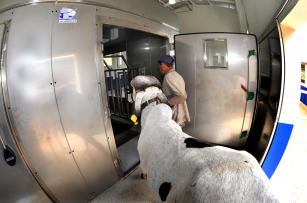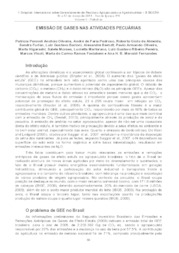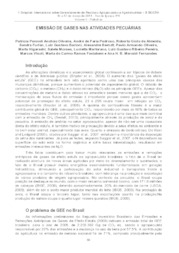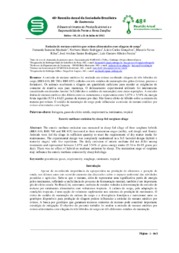RumenGases – Conceptual advancement in diagnosis and strategy for the mitigation of enteric methane in ruminants in Brazil
RumenGases – Conceptual advancement in diagnosis and strategy for the mitigation of enteric methane in ruminants in Brazil

Photo: Nicoline, Humberto
The intensification and adoption of integrated systems has allowed advances for sustainable livestock production. It is important to obtain production with minimal environmental impact. Brazilian livestock, in particular, have been following this trend. The cattle herd contributes significantly to the emission of greenhouse gases, mainly with the emission of enteric methane, which can become a non-tariff barrier for the export of animal products. In this sense, the RumenGases project was developed with the objective of providing conceptual advances in diagnosis and strategies for the mitigation of enteric methane in ruminants in Brazil. The project is part of the PECUS network and had the collaboration of 75 research scientists and 24 institutions. The project allowed the implementation of a reference center for the evaluation of enteric methane, involving the adoption of the main methodologies available, such as the gold standard method using respirometric chambers, sulfur hexafluoride tracer gas method, in vitro methodologies and spot collection by face mask. It was possible to standardize the methodologies and generate a national enteric methane emission database of the main ruminant species of zootechnical interest and the development of prediction models for the Brazilian conditions. Plant species of the different Brazilian biomes were screening and those with potential for mitigating enteric methane were identified. Methane mitigation strategies were tested involving the inclusion of ingredients in diets and management practices, with emphasis on the use of oil, additives and management intensification of tropical pastures that exhibited mitigation potential of up to thirty percent of the emission . With the data from the project it was possible to evaluate production systems and prove the potential of livestock to provide environmental services, since the systems presented a positive balance, sequestering more carbon than emitting. The project generated technologies, products and processes with the potential to contribute to the mitigation of enteric methane and serve as a basis for guiding public policies aimed at the reduction of greenhouse gases in agriculture.
Ecosystem: Amazonic, Extreme South, Atlantic Forest, Semi-mixed and seasonal forests, Mid-North, Pantanal, Caatinga Region and Mixed forests, Cerrados Region, Pinheirais Region
Status: Completed Start date: Fri Apr 01 00:00:00 GMT-03:00 2011 Conclusion date: Sun Jul 31 00:00:00 GMT-03:00 2016
Head Unit: Embrapa Dairy Cattle
Project leader: Luiz Gustavo Ribeiro Pereira
Contact: luiz.gustavo@embrapa.br



